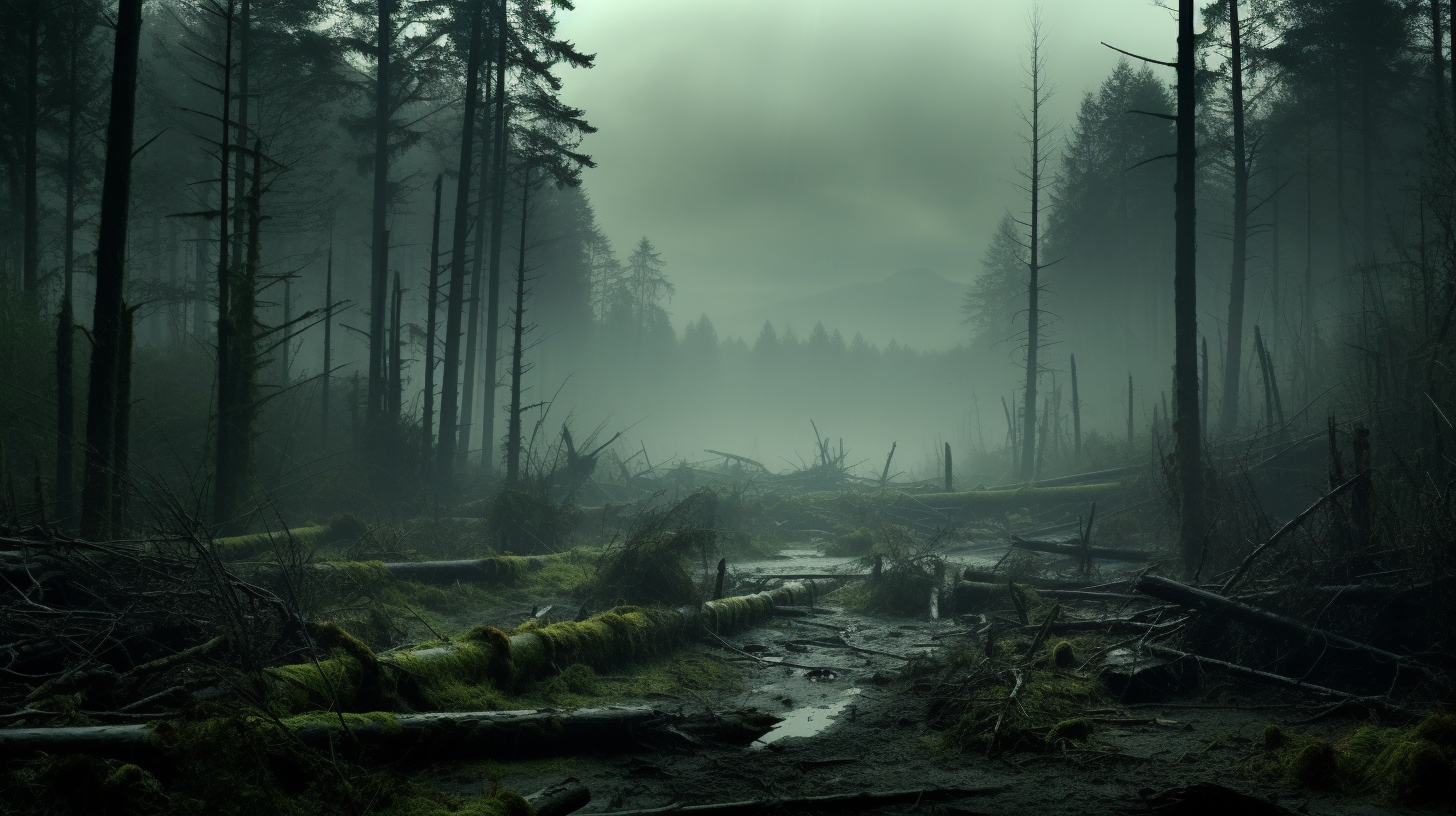In an era where the symphony of nature has dwindled to a feeble whisper, the once vibrant forests stand as spectral monuments to a bygone era of ecological splendor. These forests, now mere ghostly shells of their former selves, evoke a peculiar nostalgia—a longing for the chorus of life that once echoed through their branches. ‘Spectral Forests, Where Trees Echo the Past’ is not simply a tale of ruin but a somber reflection on nature’s undying echoes amidst the silence brought on by humanity’s grave environmental oversights.
Within these exanimate woods, seasoned branches still sway with strange and silent grace. They recall days when each leafy rustle was a note in the grand opus of the wild. Birds fled these desolated realms, which the past article ‘Fading Echoes’ discussed in melancholic detail. Now, walking through these forests, one can almost hear the ghostly warbles and thrums of absent creatures, an auditory mirage fueled by memory and loss.
What poignant tales could these timeworn trees tell if their cores were to unravel and converse? They have witnessed the relentless advance of climate adversity — droughts that left their roots parched and skies that turned their leaves into brittle sepia-tinted portraits. With no feathered friends to sing of their troubles or shield them from the scorching sun, they have become stoic witnesses to their own decline.
Amid the seemingly hopeless tableau, there emerges an eerie beauty in the forlorn, which beckons our morbid curiosity. The inexplicable majesty of seeing the sun’s rays pierce the skeletal canopy, casting long shadows that play with our senses. Photographers and poets alike are drawn to these places, capturing the paradox of desolation’s allure.
There’s an air of the surreal that permeates the foliage-less boughs—a scenery akin to the haunting backgrounds of post-apocalyptic films where nature’s vitality is a distant memory. Yet these forests have transformed into organic museums, galleries of a world that has ceased to exist but whose impressions are indelibly marked in the soil and the gnarled textures of the bark.
In these stands of silent sentinels, futile efforts of resurrection have been made. Saplings are nurtured, watered, and planted in the hopes they might mature into the vibrant ecosystem progenitors of before. Projects aimed at rewilding these lands clash with the harsh truth portrayed in the previous articles: that perhaps the threshold has been passed, and that these efforts, while noble, resemble attempts at reviving the ghosts of forests rather than restoring the livelihood.
Scientists and ecologists persist, however, grappling with the daunting task of revitalizing these hollow havens. Their work, steeped in desperation and determination, stands as a testament to the resilience not of the forests, which have succumbed, but of human hope against despair.
There is haunting beauty here in these spectral woods, and a sense of serene tragedy. We are reminded that every breath we take was once contributed by the verdant guardians now subdued to wan woodlands. These forests, echoing the past, serve as sobering reminders of the brevity and fragility of life itself.
In the end, the question that comes bearing down upon us, with the weight of fallen leaves, is whether these spectral forests are simply to be observed as melancholic curiosities or if they might, against all odds, be the battlegrounds for humankind’s last stand in the fight to restore nature’s lost melodies. In this, our narrative may be woefully set, or perhaps, there remains a glimmer of a chapter unwritten, where the spectral can once more flourish to spectral.
